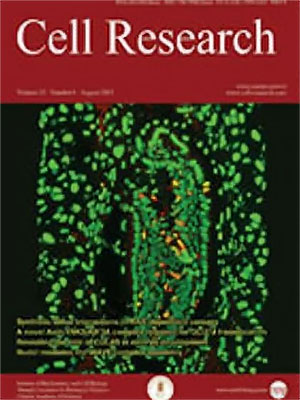
Volume 14, No 2, Apr 2004
ISSN: 1001-0602
EISSN: 1748-7838 2018
impact factor 17.848*
(Clarivate Analytics, 2019)
Volume 14 Issue 2, April 2004: 95-100
REVIEWS
Myosin binding protein C: Structural abnormalities in familial hypertrophic cardiomyopathy
Cecily E OAKLEY1, Brett D HAMBLY1, Paul MG CURMI2, Louise J BROWN2
1Department of Pathology, University of Sydney, NSW 2006, Australia.
2Initiative for Biomolecular Structure, School of Physics, University of New South Wales, NSW 2052 and Centre for Immunology, St Vincent's Hospital and University of New South Wales, Sydney NSW 2010, Australia.
Correspondence: Cecily Oakley(cecily@med.usyd.edu.au)
The muscle protein myosin binding protein C (MyBPC) is a large multi-domain protein whose role in the sarcomere is complex and not yet fully understood. Mutations in MyBPC are strongly associated with the heart disease familial hypertrophic cardiomyopathy (FHC) and these experiments of nature have provided some insight into the intricate workings of this protein in the heart. While some regions of the MyBPC molecule have been assigned a function in the regulation of muscle contraction, the interaction of other regions with various parts of the myosin molecule and the sarcomeric proteins, actin and titin, remain obscure. In addition, several intra-domain interactions between adjacent MyBPC molecules have been identified. Although the basic structure of the molecule (a series of immunoglobulin and fibronectin domains) has been elucidated, the assembly of MyBPC in the sarcomere is a topic for debate. By analysing the MyBPC sequence with respect to FHC-causing mutations it is possible to identify individual residues or regions of each domain that may be important either for binding or regulation. This review looks at the current literature, in concert with alignments and the structural models of MyBPC, in an attempt to understand how FHC mutations may lead to the disease state.
FULL TEXT | PDF
Browse 2009


